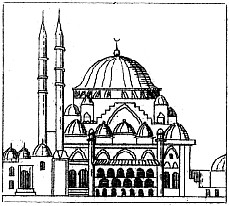Pieter de Witte (Peter Candid)
painter, sculptor, and architect; b. 1548 (at Bruges, in Belgium); d. 1628.
Peter's father, Elio Candido, was a Belgian bronze caster associated with Jean Bologne. The family name, de Witte (White), was translated into Candido in Italy, and became Candid in Germany. Peter Candid appears first in 1572, associated with Georgio Vasari in his decorative work in Rome and afterward in Florence. In 1586 he attached himself to the court of the dukes of Bavaria in Munich, and was one of the chief movers in the introduction of Italian art into Bavaria, which followed the admission of the Jesuits in 1559. He was especially employed upon the extensive improvements undertaken by the Elector Maximiliam I at the Residenz in Munich. He continued the decorations of the old Residenz, and built and decorated the new palace which was added by Maximilian I between 1607 and 1617. In 1619 Candid made designs for the decoration of the ceiling of the Golden Hall of the Rathhaus in Augsburg, which was actually executed by Mathias Kager. The designs are still in the cabinate of engravings at Munich. He painted altarpieces in the Jesuit church of St. Michael, at Munich, and designed the statue of S. Michael on the facade of that building. In 1604 the Elector Maximilian I established a manufactory of tapestry, which was placed in charge of Peter Candid.
1572.08.24 the massacre of S. Bartholomew
| |

Another mosque at Constantinople, called the Solimania, built in the seventeenth century, with pointed arches.
Seroux
| |
|